A V10 song cuts through the air at Hatzenbach, the elegant Lexus LF-A in all its pomp and glory lights up a dull evening………..ah, the Nürburgring 24 Hours, a very special time and place.
John Brooks, May 2012

As we approach June and the annual run at La Sarthe, one of the questions out there is can Tom Kristensen add to his tally of wins, taking his record even further out of sight?
Marvin Gaye’s “A Funky Space Reincarnation” gave us all something catchy to sing along to when thinking back on TK’s time in l’Ouest.
“One Fun, Two You, Three Me, Four More, Five No Jive, Six No Tricks, Seven We in Heaven, Eight Everything is Straight, Nine Fine, Ten…Let’s Do It Again………..
John Brooks, May 2012
Racing has lost one of its true “originals” with the death last week of 89 year old former Texas chicken farmer, Le Mans winner and Cobra entrepreneur, Carroll Shelby. While he wasn’t the originator of the Ford Motor Company’s “Total Performance” program that brought the Detroit giant foursquare into motorsport in the 1960’s, it was he and his Cobra which arguably expanded Ford’s competition efforts beyond the world of NASCAR into the international scene that included Le Mans and eventually Formula One.
A Second World War Army Air Force instructor pilot, Shelby was one of the many Americans who came out of the Southern California road racing community in the immediate years following the conflict’s end; a cadre that included men such as Phil Hill, Richie Ginther, Masten Gregory and Dan Gurney among others. Having established himself as part of the winning elite behind the wheel of various Ferraris and Maseratis, he moved to Europe in the latter part of the 1950’s, driving in both Formula One and in sports cars.
And, although his F-1 career was less than spectacular, his two seater results were more than impressive, including his 1959 Le Mans triumph as a member of the John Wyer led Aston Martin factory team. Unfortunately, it was not long after that he began to experience the heart issues which would force his cockpit retirement and which would eventually lead to a heart transplant that extended his life for more than 20 years.
While his heart have made him quit as a driver, he didn’t quit the sport. In 1962, having learned that the Bristol engine supply for the AC Ace had dried up, Shelby set out to make a deal that would replace that powerplant with a V-8 from one of Detroit’s big three. Coming to an agreement with AC was the easy part, convincing the “Motown” executives was not.
Turned away at both General Motors and Chrysler, Shelby found a much better reception at Ford which saw the opportunity being offered them and said “yes.” Thus was born the Cobra “powered by Ford” in the form of its small block eight cylinder used in its Falcon compacts and medium sized Fairlane. The Cobra proved to be not just a race winner, but a performance image sales leader that boosted Dearborn’s profits throughout its entire car range.
Despite its crudeness, the reborn Ace was more than up to the job of humbling its Corvette competition, claiming two straight United States Road Racing series crowns in 1963-64 against not only Zora Duntov’s two seater, but the Ferrari and Aston Martin entries that accompanied it. More importantly, having lost out to the Italians through a bit of chicanery on Enzo Ferrari’s part in 1964, Shelby’s Cobras took the World Manufacturer’s title for Ford in 1965 with relative ease.
By then, though, Shelby was deeply involved in not only the GT40 project, but also in transforming the hot selling Mustang into a proper racing car in the form of Shelby’s California-produced GT350 version which dominated its class in North American amateur competition.
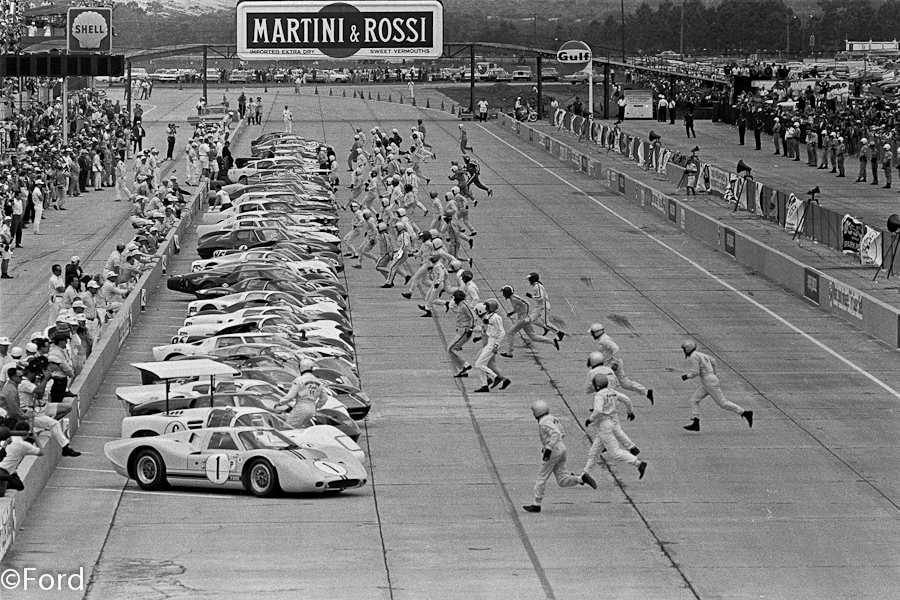
Despite problems, it would be Shelby entered Mark II and Mark IV GT40s that would claim the honors for Ford at Le Mans in 1966 and ’67, those triumphs leading the FIA to kick the Americans out of the Makes championship of which the Sarthe was a part immediately thereafter.
With end of the factory GT40 program (Wyer-entered five liter Mark I examples would embarrass the FIA and the French by winning again in 1968 and ’69), came a new domestic beginning for Shelby in the form of the Trans-Am sedan series which again pitted the Mustang against GM’s Camaro and AMC’s Javelin for “Pony Car” superiority, again on the track and in street sales.
For Shelby the Trans-Am was a mixed bag. After winning the title in 1967, his team’s fortunes declined despite some individual race successes, as Camaros of Roger Penske and Mark Donohue claimed the Trans-Am crown in 1968 and ’69, the latter season being Shelby’s last in the championship.
Indeed, it likewise marked the end of his relationship with Ford, as the company was forced to leave motorsport during the 1970’s to deal with the increasingly burdensome government imposed emission and safety regulations. Later in life, after a brief association with Chrysler, he would return to Ford, not as a racer, but rather in the role of someone who lent his name to various of Dearborn’s high performance street vehicles.
In many ways, Shelby’s true talent, aside from his driving, was as a self promoter, which might seem at first glance to lessen his value and image within the sport and the automotive industry, but which on more sober reflection is not so because in his self promotion Shelby over and above his racing successes left us with a desire for high performance street cars that has continued to this day despite all attempts to quench it. For that he will remain always a giant.
Bill Oursler, May 2012
Touring cars have always brought out the inner hooligan in racing drivers, looking through the archive the other day I happened upon this little cracker.
I wrote about this incident at the time,
BMW faced factory efforts from SEAT, Peugeot and Ford. But their closest opponents was the squad of Alfa Romeo 156 S2000s. At Spa the lead driver for the Italians was Augusto Farfus, who led Race Two till he had to serve a drive through penalty for this bit of mischief on the second lap as Jörg Müller’s BMW attempted to pass………………the cars are flat in fifth, climbing up the long Kemmel Straight to Les Combes, so repeatedly biffing the car next to you and putting them on the grass is regarded as a bit much………….I am pleased to report that my man Jörg did not lift…………..when I asked him after the race about the incident he looked surprised that I even considered the possibility that he would take his foot off the gas for a fraction of a second………………..
A Real Racing Driver
John Brooks, April 2012
24th TECHNO CLASSICA ESSEN
Others may try to emulate or even usurp Techno Classica’s position as the biggest and best classic car show in Europe but they’ve got a long way to go to match the sheer breadth and depth of quality drawn to the Messe Essen where organisers S.I.H.A. packed all nineteen halls of the huge complex and even have a waiting list of exhibitors. The visitors obviously appreciate their efforts too, as attendance figures of 181,400 testify – and that was up by just over 11,000 despite there bizarrely being a rival event staged in Stuttgart on the same weekend.
Techno’s strength is the sheer variety of exhibits from major manufacturers, high-end dealers, clubs large and small and an array of traders and autojumblers. Many European manufacturers are proud of their heritage; Mercedes for instance made much of the 60th anniversary of their SL models which began with the 300SL and that Le Mans victory in 1952, whilst the VW Audi Group now encompasses so many brands that they fill an entire hall with everything from a humble NSU to Lamborghini Countach. Opel meanwhile were concentrating on record breakers from their past.
Numerically, Porsche 911 was probably the most common car with every conceivable variant to be seen, but the factory chose to honour the RS Carrera with a pair of Martini-liveried racers adorning their area in the VW hall. 356’s abounded too with several restorers – most notably Hackenberg – displaying their abilities, whilst one of the dealers concentrated on cars that had clearly spent too long in the Californian sun!
BMW somewhat amusingly put a lot of emphasis on the British brands – Rolls-Royce and Mini – that they now own. But did they shoot themselves in the foot by displaying their latest Mini Coupe alongside a gorgeous Broadspeed Mini GT? The latest product looks truly hideous anyway, only emphasised by putting the Broadspeed gem beside it.
As befits a company that has passed its 100th birthday, Alfa Romeo has had much to celebrate in recent times and this year the boxy-looking but remarkably aerodynamically efficient Giulia saloon clocks up its 50th. Celebrations are taking place in Italy in June but in the meantime the factory brought an example along from their Museo Storico, whilst other examples were to be found on club stands, one of which was also marking the 40th birthday of the Alfasud, almost certainly the best small saloon of all time (well, this writer did own four of them over a 27-year period so should know!).
Moving on to a more obscure anniversary, did you know that the Volvo Amazon Kombi is 40 this year? Well, no neither did I until I got to Essen but Volvo devoted their entire display to the model, with examples in Polis and Fire Chief livery as well as a mildly customised one (it had big shiny wheels). Attracting most interest though was a rather ratty 1967 model that had been converted to electric power in 1995 and has subsequently covered some 200,000km despite having a range of only 120km. For longer journeys the owner takes a trailer-mounted generator with him.
Show organisers S.I.H.A. always mount an impressive central display and this year featured Spanish manufacturer Pegaso, bringing together a remarkable 21 of the total 86 cars built. They made for an eye-catching display arranged around the outside of S.I.H.A’s ‘palace’.
Indeed, look hard enough at Essen and you will find examples of many obscure and long-forgotten marques but who would have thought that a humble Riley would be awarded the ‘Best in Show’ accolade? Actually this particular representative of the Blue Diamond was not so humble, being a one-off coach-built model built for the 1949 Geneva Motor Show by Walter Koeng, who was better known for working on more upmarket brands. However, he created the Riley as his personal dream car and it remained in his ownership for many years until passing it on to a close friend. Only now has it come to market via well-known dealer Lukas Huni, who was showing it at Essen.
Having visited Essen several times in the company of a Riley enthusiast who has always been frustrated by the lack of Riley’s, it is somewhat ironic that he did not come this year as there were several examples to be found. In particular, pre-war sports cars were found on several dealer stands, a reflection of growing interest on the back of a burgeoning series of events in Germany for just such cars.
Whilst many of the dealers inevitably cram as many cars as possible into their allotted space, making inspection and photography difficult, it’s often some of the smaller traders and individual sellers that have the real gems. How about a 1961 Austin Mini Seven with less than 3,000 miles on the clock? This genuine, remarkably original example must be one of the lowest mileage Mini’s to be found anywhere and comes with all its original documents and some very period accessories.
The clubs run their own competition, leading to some innovative displays, some very well done, others a little bizarre (how about the gay car club promoting sex on the beach?) but again you never know what you’ll find. Whilst the Smurfs carrying out maintenance on a VW Kafer was different, equally so was the one and only 4-door version of the original Audi Quattro, restoration of which had only been completed the night before the show opened.
And that’s the beauty of Essen – there really is something for everyone. Next years’ event has already been confirmed for 10-14 April 2013, so make a date. More information can be found on www.siha.de
John Elwin, April 2012
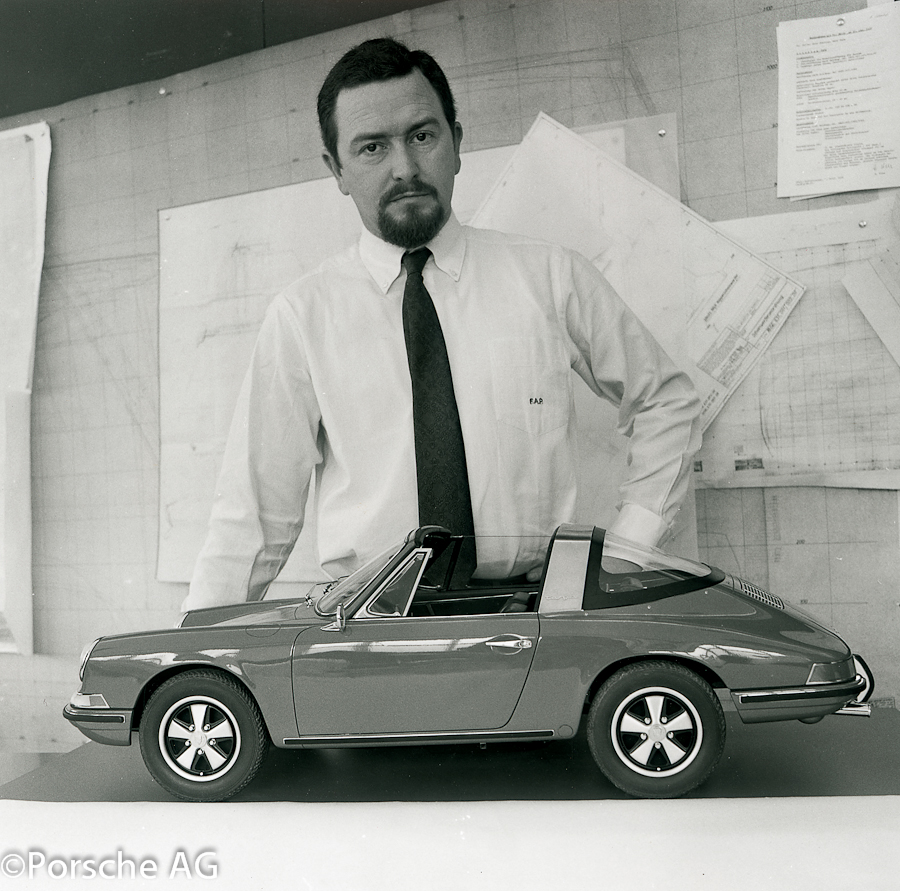
The automotive world lost one of the least known, but perhaps most influential of its design geniuses last week with the death of 76-year-old Ferdinand Alexander Porsche, better remembered by most as “Butzi,” in Salzburg, Austria after a lengthy illness. The eldest son of Ferry Porsche and the grandson of Ferdinand Porsche, Butzi carved his own niche during his tenure as head of the sports car company’s Styling Studio.
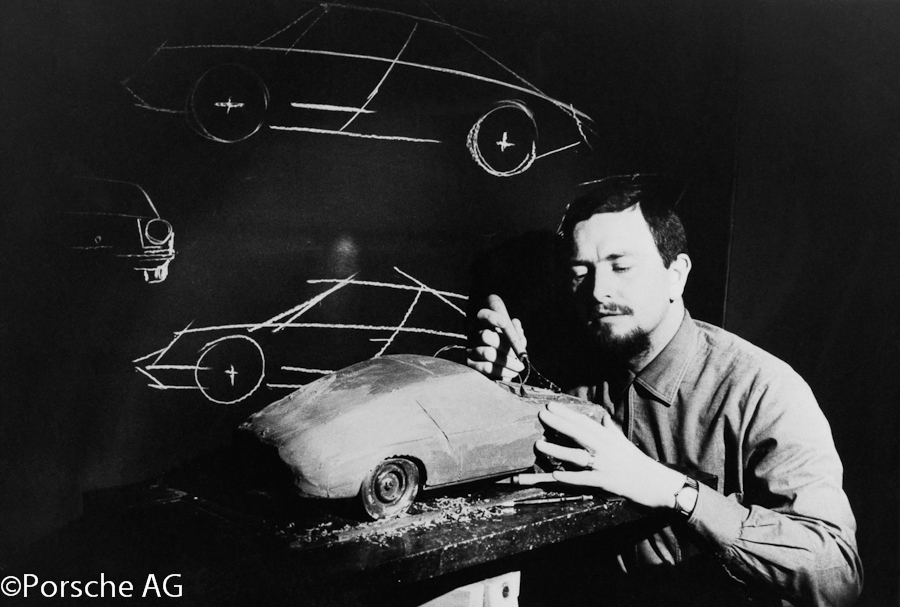
It was while he was in charge that he penned the body shape for the iconic 911, whose original bodyshell, with modifications, remained in production from the fall of 1964 through the mid 1990’s. And, while it has been superseded in the years since, the overall “look” of the 911 has remained intact to this day.
After leaving the company at the end of 1971, in a change of direction to broaden the outlook of the firm that saw all family members, including Ferry Porsche himself, depart their day-to-management positions, Butzi formed his own company, Porsche Design. His talents quickly made it famous for its award winning high end consumer products led by its long line of watches and sunglasses that were almost required purchases for aspiring “in crowd” members.
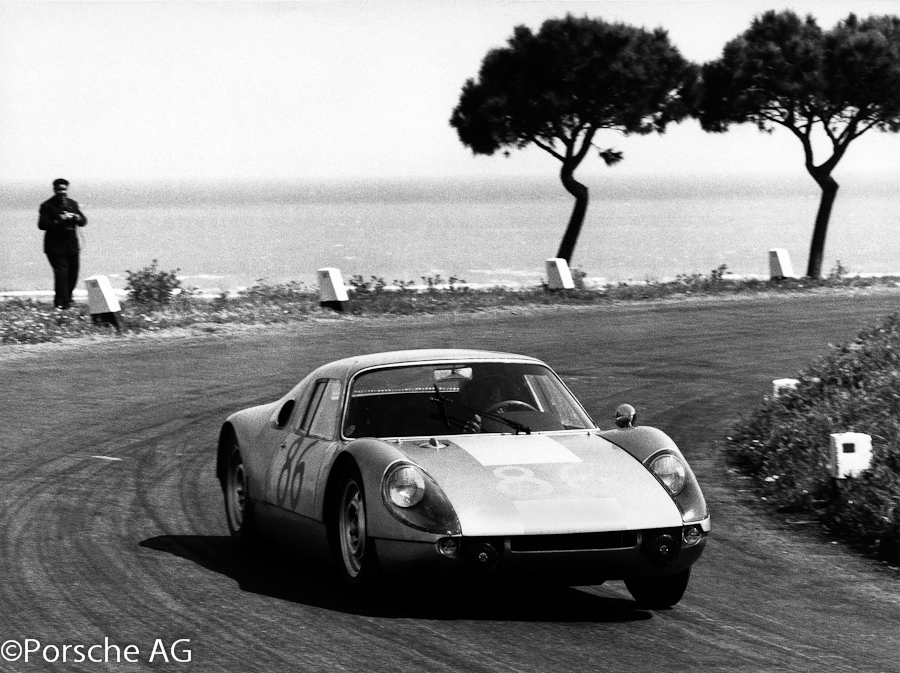
Less well known, was his contribution to the motorsport side of Porsche. There he made history as well with his design of the Porsche 904, the two-liter, first all-fiberglass car ever fielded by the Zuffenhausen factory. Not only is the 904 considered the most beautiful of all Porsches, it dominated the small displacement sports racing category for more than two years between 1964 and the early part of 1966.
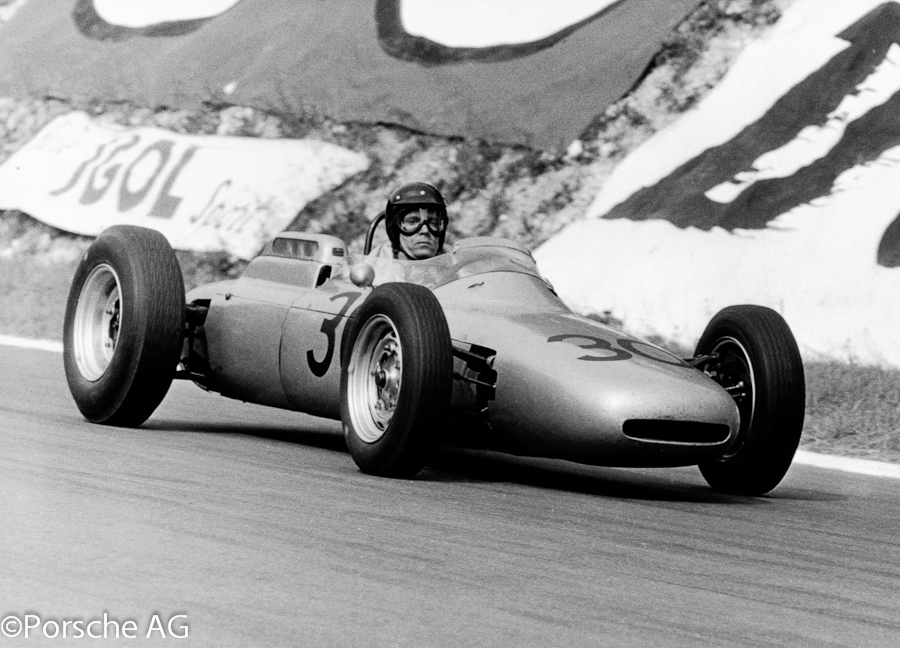
In addition to the 904, Butzi likewise worked with the engineers during Porsche’s first foray into single seat, open wheel racing. It was his design, the 1962 Type 804 that brought the factory its first and so far, only Formula One triumph as a chassis and engine builder. That highlight moment came when Dan Gurney won the 1962 French Grand Prix at Rouen. In addition, he drew the bodies of Porsche’s later Spyders and several of their enclosed coupe counterparts that kept Porsche in the sports racing game until the 904 made its appearance.
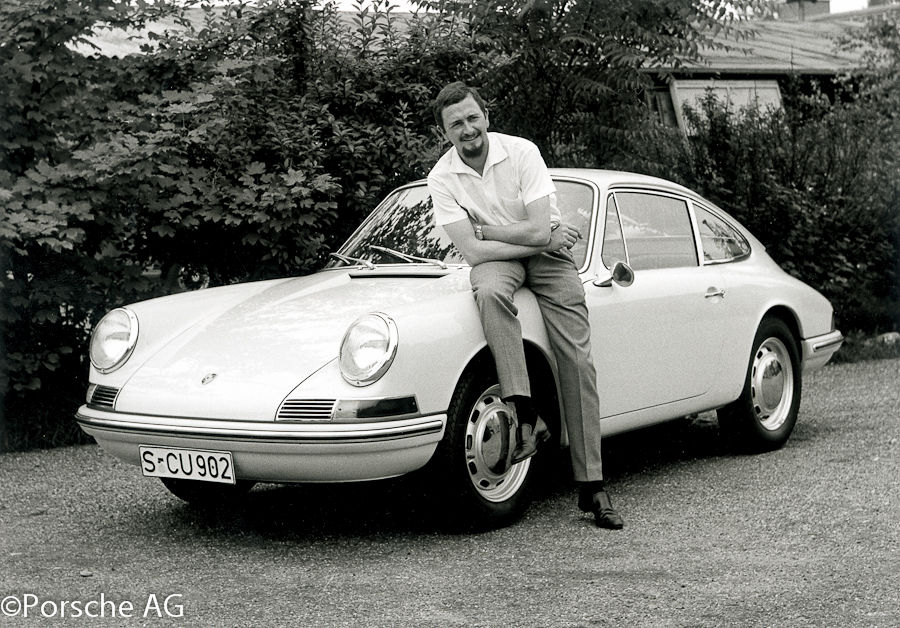
He is survived by his wife and three boys.
Bill Oursler, April 2012
For years Porsche played the role of a supporting player in sports car racing around the world. It played it well – perhaps Academy Award winning well, but nevertheless seemingly destined to remain as a class and not an overall winner capable of standing alone in the center stage spotlight.
Yes, there were outright wins in the unique over-the-road events like the Targa Florio as well as the important hillclimb arena. These, though, for all their tradition – the Targa going back to 1906 – were perceived to be outside the mainstream. The general consensus being that such affairs suited well a small displacement entry like a Porsche Spyder because handling and balanced performance rather than a reliance on outright horsepower and speed were the keys to winning.
That perception of Porsche changed one March Saturday in 1960 when Hans Herrmann and Olivier Gendebien drove their underrated RS60 Spyder to an overall victory at Sebring, leading a one-two Porsche sweep and humbling the far more powerful Ferrari Testa Rosa in the process. Before the decade was out not only would Porsche repeat its Sebring success in 1968, but would also go on to claim the World Manufacturers Championship just a year later.
But, while under Ferdinand Piech, then head of Porsche racing, and today the chairman of giant Volkswagen, Zuffenhausen transformed itself into the mega, global headlining sports racing star it now is, no where has its greatness been more evidenced than at the Florida 12-hour classic.
Porsche’s Sebring record shows it has amassed no less than 67 class triumphs, 207 top ten finishes, and led 19,977 miles out of the 2, 4 million miles covered by its cars and their 3,300 drivers that have participated at the Central Florida airport circuit.
Perhaps more important than those impressive statistics is the fact that of the 60 12-Hours held so far,Porsches have won 18, or just under 20 per cent, 13 of those wins being consecutive between 1976 and 1988. And, as if all that weren’t enough, it was Derek Bell who set the existing lap record of just 130 miles an hour in a Porsche 962 during the 1986 event.
Will Porsche win Sebring again? With the factory preparing to re-enter the prototype scene for 2014 don’t bet against the engineers from Weissach.. Remember their last overall Sebring triumph came in 2008 when Roger Penske’s supposedly underdog RS Spyders took the checkered flag ahead of the then undefeated headlining Audis. If they could do that, with a car not necessarily designed and made to race at the front, you can bet they’ll be a favorite to carry on what was one of their most proud winning tradition, not only at Sebring, but that everywhere they race.
Susann Miller, March. 2012
Susann Miller (susannart@aol.com) is a noted Porsche author and enthusiast, with 12 books and numerous articles to her credit on the subject of Zuffenhausen and its cars. www.porschebooks.org
When I was studying military history as a young college student back in the 1960’s, my professor told me that if someone asked why I was doing so, I should immediately change the subject. In retrospect, it was both sage and non sage advice.
History, which is truly important (“those who don’t learn the lessons from it are doomed to repeat them over and over again”), gets no respect. Indeed, for the most part it is ignored in a world preoccupied by the present in a near total self indulgent way. And, perhaps even more sadly, when those among us decide to pay attention, they tend to do with such superficiality that they might as well not have bothered in the first place.
All this was brought home to me at Sebring this year. Aside from the fact that its duality as both the season opener for the American Le Mans and the new World Endurance Championship caused it to be possibly the most confusing, difficult to follow long distance event of all time, it marked the 60th anniversary of the first ever 12-Hour in 1952. And, while Sebring has Ken Breslauer as both its press officer and “historian in residence,” the folks at the top all too often pay only lip service to his knowledge and talents.
As an example, despite Breslauer’s efforts, Sebring has yet to put a proper museum together to celebrate its legacy, or even to explore a working relationship with the Collier Museum, one of the finest collections of significant race cars anywhere, that is located in nearby Naples, Florida.
A second example, was the non presence, at the luncheon celebrating the occasion, of my friend Luigi Chinetti, Jr., who lives barely 100 miles from the track, and who, with his father, a three-time Le Mans winner, played a significant role through their Ferrari North American Racing Team, in Sebring’s past.(Among other things, NART fielded the first Ferrari 250 GTO to race at the 1962 12-Hour, the car winning its class and finishing second overall behind a NART entered prototype.)
There are others who weren’t part of the tributes to the now more than six decade existence of Sebring’s famous affair. However, Chinetti would have brought a unique perspective to the happenings this March on the aging circuit, having grown up in and around the race and the sport. For Chinetti, like so many others, the past was a better place to be: a time when humans, rather than computers were the keys to design excellence and design individuality. Yet, just as is the case with other aspects of life, respect for and an understanding of history does not mean we should live in the past, and as I noted learn from its lessons to make the present and the future better.
Over time motorsport in general has made tremendous strides in safety and efficiency while not forgetting the inherent excitement any speed contest generates. Love them, or hate them today’s prototypes are the ultimate in ground bound racing technology, and as such are truly unforgettable. It is that factor, which was present in spades at the 12-hour among the prototype categories, as well as in the production GT entries, that will keep the interest of the fans.
What history does is to polish the tradition that this new wave of racers are carrying on, and thereby enhance their importance. I may be an old fart, but that 250 GTO which Chinetti and his dad put on the 12-hour grid 40 years ago, now is worth well over 25 million dollars: not bad for an obsolete race car that, along with its almost equally valuable contemporaries that some would so casually dismiss as part of the dustbin of racing’s past.
Hopefully as people decide to explore history, I will be relieved of the necessity of having to change the subject when I’m asked why I’m a historian. And, that, as far as I’m concerned can only be a good thing.
Bill Oursler March 2012